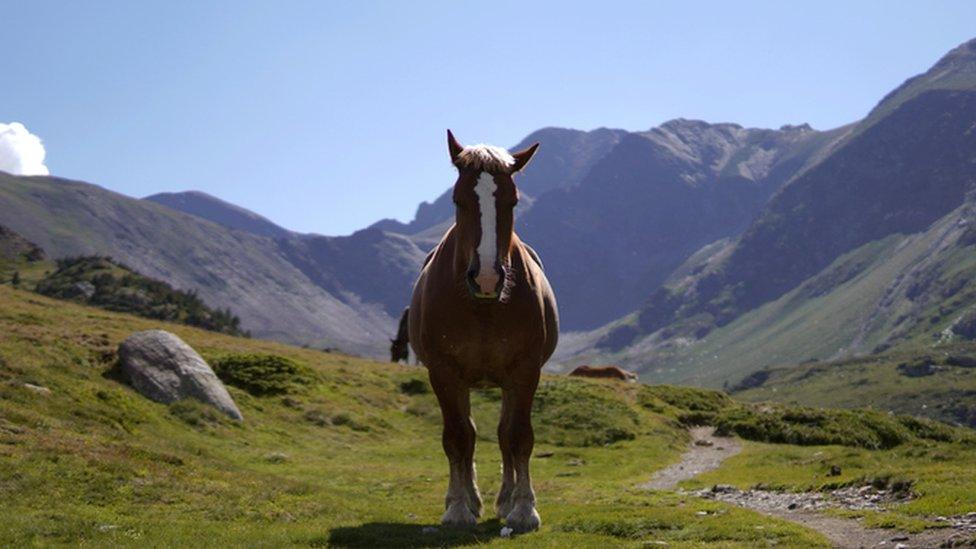Conservation: Lynx and wild horses among animals to be reintroduced in Spain
- Published
- comments

The first wild foal was born this summer thanks to the project
Conservation efforts in Spain are taking a step forward as some animals that used to live there are being reintroduced.
It's part of a big rewilding project which looks at restoring ecosystems around the world so the nature can get to a point where it takes care of itself without human intervention.
The Iberian lynx, black vultures and wild horses are among the animals being released in the Iberian highlands in the east of the country.
It's Rewilding Europe's 10th project on the continent and they hope it will "benefit both nature and people".
Why do we need rewilding projects?
Livestock farming and hunting has had a huge impact on the biodiversity in the Iberian Penninsula of Spain
Humans have had a huge impact on ecosystems around the world it's hoped conservation projects like this one will help to restore and recreate habitats (otherwise known as rewilding) so nature will be able to restore itself.
It's all in an effort to help slow down the effects that things like climate change has had on our wildlife.
Rewilding Europe think the Iberian highlands are the perfect place to do this project as the land here has been abandoned by humans over the past few decades in favour of city living.
It is a balancing act though - conservationists have decided against reintroducing wolves because there's a worry they would eat the locals' livestock.
A person who helps to protect and look after the environment and the wildlife in it.
Which animals have already been released?
Up to 15 vultures will be introduced every year
A small heard of semi-wild horses were introduced this summer, with the first foal born in July!
In September, black vultures were released and they aim to release up to 15 of the birds of prey each year.
These have been fitted with GPS trackers so scientists can keep an eye on them.
Conservationists are introducing a species similar to cows and buffalo
Conservationists are also trying to reintroduce an ancient species which is similar to cows and buffalo, called aurochs.
They used to have a vital role in Europe because they graze on the grass which helps to maintain biodiversity - the amount of variety in animal and plant life in a particular habitat.
Which animals are still to come?
The Iberian lynx is only found in the Iberian Peninsula in southwestern Europe
The Iberian lynx used to be the world's most endangered cat, and they'll be released to the area in the next year or two.
Conservation efforts over the past 20 years has seen their numbers increase from less than 100 to nearly 600 according to Rewilding Europe.
They're still listed as endangered though, which is why there's such a big effort to protect them.
It's hoped this project will also help to protect old forests that are being cut down and create opportunities for nature-based tourism.
- Published13 October 2022
- Published13 October 2022
- Published9 October 2022
